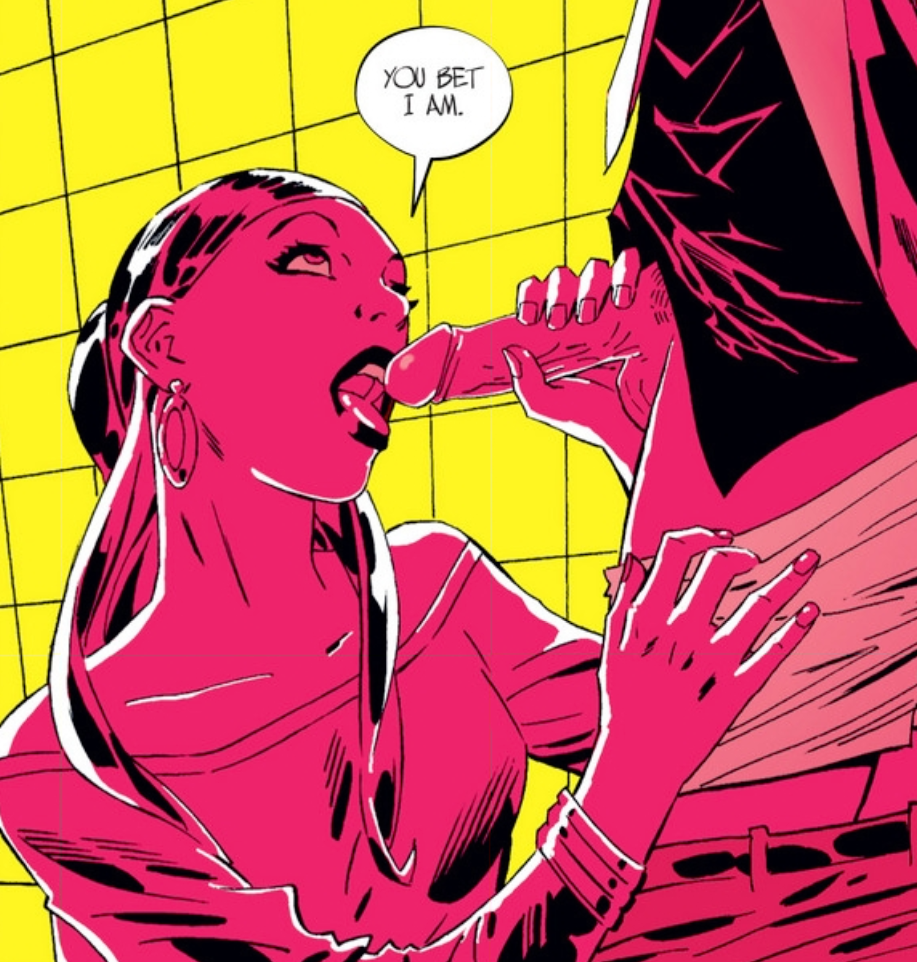Last time we’ve learned that a new kind of transformed pornography is spreading that can even be purchased on big shopping websites like Amazon. Apparent pornography is the legal heir of that kind of porn which was only available in sex shops in past times. But porn as we knew it has changed: while pornography itself is breaking into several compartmentalized pieces, called niches, classical porn is slowly infiltrating into mainstream. This doesn’t necessarily mean the explicit depiction of the sexual act; for example, the wonderful movie “Turn me on”[1] tells the story of the sexual awakening of a female teenager, realistically and subtly, but without being shy with the delicate parts. It succeeds with portraying a ‘wanton’ girl as a positive role model.
This is a very refreshing revival of the teen movie, and it doesn’t leave out sexuality. Surprisingly, this tamed kind of pornography has an educational impact. In this part of the series we are going to investigate another medium that includes sex scenes which are used for promoting a plot: comic books.
From underground to glamour
Comics suitable only for adult readers are no invention of the freethinking Sixties: starting with the tijuana bibles, then followed by underground comics, comic books have often been the testbeds for ‘serious’ publications. A lot of them are now regarded as classics like the sex magazines we have discussed in part two of this series. The works of Eric Stanton, John Willie, and Gene Bilbrew are now available in high-priced volumes[2], like that of other ‘established’ artists. This development didn’t come overnight. It is related to our perception and use of pornography. A comparison between a comic sex book from the past and a current post-superhero saga will illustrate this.
“Pleasure”

“Pleasure Magazine” was a very successful European porn mag published from 1974 – 1997 and 1998 – 2001[3]. There were several branches, including movies and other magazines, with one of them being a comic book miniseries. The two-part “Pleasure Comic” (unknown artist, (C) 1979, SASS Verlag) features a wild story about secret agent Y34, alias Rita, who has to defeat a terror attack against a nuclear power conference. Acting undercover, this dangerous mission makes her meet many sinister men and women she is going to have sex with. Of course she has.
The scanty plot takes us to then exotic places like Berlin and Rome where Y34 fights terrorism in her own sweet way. The story has the dramaturgy of a typical porn feature with a simple plot and lengthy sex scenes. Only at the end the storyline grows a bit stronger when Y34 is going to her limits in order to prevent the assassination attempt. Basically, “Pleasure Comic” serves the clichés of the spy thriller sujet. The story has an arc of suspense, culminates in an orgasmic finish, and at the end all all problems are solved. Happy endings on various levels, precisely said.
Unfortunately the plot, its characters and the problem-solving strategies are too basic for yielding bigger interest, despite its detailed drawing style and characters pretty to look at. The action proceeds too fast, the story isn’t much interested in its characters which aren’t allowed to undergo any development. At least the ‘evil ones’ are not evil enough to get killed, because they are needed to provide Y34’s next climax. Another point of criticism addresses the localities of the story: instead of using the comic book medium and making things possible that wouldn’t be easy to realize in a real movie, the outdoor scenes are rather short and sex is happening in hidden or private environments, just like in a porn movie of past decades. There are also rather few total views: the point of view narrows and focuses on the fuck action only. Both cities and characters aren’t introduced visually but with long passages of text. Surprisingly much text for a porn production, by the way. If the “Pleasure Comic” was a film, it would have been produced for the home video market.
“Sex”
What difference “Sex” makes! Sex (by Joe Casey, Piotr Kowalski, (C) 2013 Image Comics, Inc) tells the story of retired superhero and chief executive Simon Cooke, and it hops in just at the moment when Simon returns to Saturn City, to lead the life of a “normal” civilian. From the very first frames the reader receives an impression of watching a movie. There is a long exposition with many totals, making us grasp the environment. Saturn City is a megacity, a giant playground for things to come. Cooke’s retirement has created a power vacuum and a lot of villains and everyday heroes get themselves ready to fill this vacuum.
It is no accident that some aspects of this story look familiar to the experienced reader: Saturn City is a modernized Gotham with a bit of Metropolis. There’s the shiny public image of a properous city, but there are also the red light district and the gloomy atmosphere of neglected boroughs where evil powers are looming. In the first chapters the introduced figures are floating freely, unconnected to each other. The story is giving them time, more and more figures are introduced, and the graph of connections between them is constantly growing and becoming a complex web. Readers who expect action from page one on will be disappointed: the story arc is much smoother than it’s title may suggest.
The story line and its superb graphic implementation make clear that sex is not just another ordinary sex and crime story. Watching Simon Cooke’s clumsy steps in a world he is partially responsible for, not knowing how to deal with the many challenges of life and his public role, is a gripping and complex story in the tradition of ‘Watchmen’; a big panorama of oversized characters who had to come back down to earth. And it’s a dirty earth that is expecting them.
Where’s the sex?

So where is the sex, you may ask now. There’s a lot of it, flaring up like bonfires, and it signalizes several things: this is a story for grown-up people; the characters have sex in various ways (sometimes they just wished, sometimes they don’t) which makes them realistic and complete; sex is communication and thus driving the plot. At this moment we should mention the fantastic visual quality of “Sex”: the detailed and superbly coloured drawings don’t shy away from explicit details, the sex is always real and visible.
This is the biggest difference between these two comic books: while sex in the “Pleasure Comic” is solely pornographic with a pleaded impact on the story, “Sex” has a true story with characters having intercourse. The first one is a revue of sex scenes which is painfully held together by a cock-and-bull-story, while the latter one is a complex panorama with sex as one of the driving forces in a violent world. “Sex” is a feast for the eyes and a thoughtful story, daring and provocative.
Evolution
The evolution from “Pleasure” to “Sex” reflects the development of our reception of sex scenes in media. While in past times the mere depiction of sexual intercourse was provocation enough and a sensation in itself, today the presence of sex has become normal. Sexuality in its many flavours has emancipated itself which means that it’s moving from a bad main to a great supporting actor. This way it’s giving those sexual characters enough room for telling their story. This is a good thing. When sex in a story is happening naturally like it does in “Sex”, it’s giving depth to the characters and makes them real. This can’t be anything but in the best interests of all parties included: producers, who now may tell us stories about real people, and consumers who will identify, laugh, and cry with these people. Let’s hope stories like “Sex” and “Turn me on” will be inspiring for many years.
[1] Få meg på, for faen. Motlys, Norway 2011, Producer: Brede Hovland, Director: Jannicke Systad Jacobsen[2] Stanton; Willie; Bilbrew
[3] See here for a comprehensive overview.
Image Sources: Feature Image: “Pleasure Comic” Image taken from Vintage Erotica Forum, scan by “erdnuss”, “Pleasure Comic Nr. 1”, (C) 1979 SASS Verlag, Image #2: SEX #5 (C) 2014 Image Comics, Inc. Used with kind permission of the publisher




